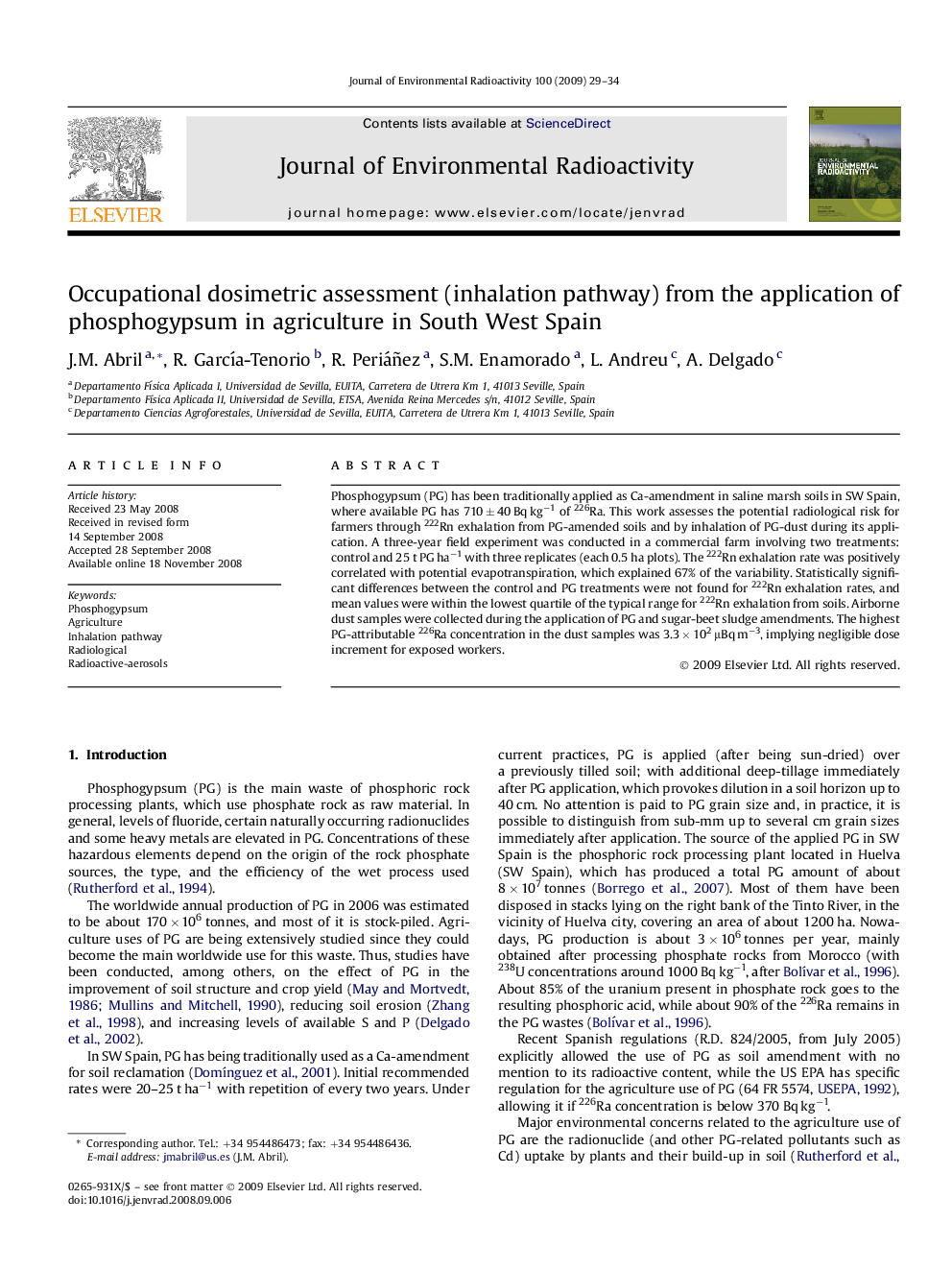| Article ID | Journal | Published Year | Pages | File Type |
|---|---|---|---|---|
| 1739056 | Journal of Environmental Radioactivity | 2009 | 6 Pages |
Phosphogypsum (PG) has been traditionally applied as Ca-amendment in saline marsh soils in SW Spain, where available PG has 710 ± 40 Bq kg−1 of 226Ra. This work assesses the potential radiological risk for farmers through 222Rn exhalation from PG-amended soils and by inhalation of PG-dust during its application. A three-year field experiment was conducted in a commercial farm involving two treatments: control and 25 t PG ha−1 with three replicates (each 0.5 ha plots). The 222Rn exhalation rate was positively correlated with potential evapotranspiration, which explained 67% of the variability. Statistically significant differences between the control and PG treatments were not found for 222Rn exhalation rates, and mean values were within the lowest quartile of the typical range for 222Rn exhalation from soils. Airborne dust samples were collected during the application of PG and sugar-beet sludge amendments. The highest PG-attributable 226Ra concentration in the dust samples was 3.3 × 102 μBq m−3, implying negligible dose increment for exposed workers.
